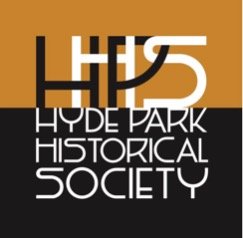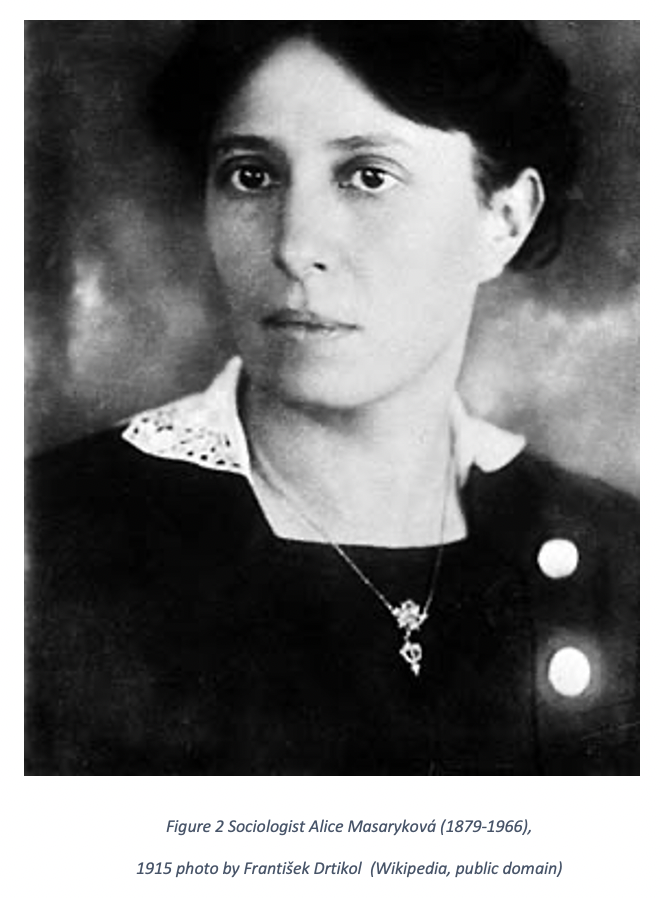Hyde Park Stories: Tomáš Garrigue Masaryk Monument
Written by Patricia L. Morse
The monument on the east end of the Midway puzzles Hyde Parkers. What’s a Blaník Knight? What’s he doing on the Midway? Who’s Masaryk?
President Tomáš Masaryk of Czechoslovakia was born in 1850 to a Moravian cook and a Slovakian coachman in what was then the Austro-Hungarian Empire. A teacher recognized his talents and persuaded his parents to send him to school. He became a professor of philosophy, authored books, entered politics, and earned enemies. He offended German-speaking Catholics when he visited Tolstoy to discuss the Czech Reformation. He attacked anti-Semitism while defending a falsely accused Jewish tramp. He defended Serbs framed by the secret police. He offended Slavs when he exposed “medieval” poems as fakes. There’s a reason Masaryk’s monument says, “Crusader for Truth.”
The fake poems were a sore spot because Czechs were creating a national identity with words. For instance, an 1894 book of folktales introduced the story of the Blaník Knights, who, as the monument’s plaque says, slumber in the “cool mountainous depths, …standing guard ready to ride forth with Saint Wenceslaus…in their nation’s hour of need.” The tale has several echoes of Washington Irving’s “Rip Van Winkle,” with ghostly figures in the moonlight, mysterious sounds in the hills, and humans who encounter them getting lost in time. “Good King Wenceslaus,” the 10th-century patron saint of Bohemia, was a monkish martyr, but late 19th-century Czechs wanted a warrior.
Masaryk caught the eye of Charles Crane, who had inherited a large industrial fortune and had endowed a lecture series at the University of Chicago. Masaryk was familiar with the United States. His wife, Charlotte Garrigue, was a music student from Brooklyn. He’d taken her last name as his middle name. He spoke fluent English and was intrigued by Chicago, the third largest Czech city in the world. He accepted the invitation.
In the summers of 1902 and 1903, Masaryk gave public lectures tying Czech culture and history to American ideals. He met with the Czech-American community of labor activists, anarchists, exiles, and opportunists, enlisting their support for a Czech republic. The ties tightened when Masaryk’s daughter Alice, a sociologist, joined the University of Chicago Settlement House to work with Jane Addams in the Bohemian community.
With World War I, Masaryk, in exile, lobbied the Allies for an independent Czechoslovakia. As a result, the Austro-Hungarian Empire threw Alice, who had returned to Europe, in prison and threatened her execution. A campaign organized by Jane Addams and the university’s Settlement House barraged the empire with thousands of letters and brought about her release.
Masaryk realized that fielding troops to fight for the Allies would give his cause leverage. With Crane’s help, he contacted the Russian minister, who agreed to allow the formation of legions made up primarily from Austro-Hungarian POWs held in Russian camps. The legions became central to the Czech foundation story. As the statue says, in 1914, the Knights of Blaník “rode forth with Masaryk and his legions.”
After the war, Masaryk returned to Chicago, where 200,000 people lined the streets to watch catch a glimpse of him in a parade of 40,000. Years of effort, and Crane’s friendship with Woodrow Wilson, paid off when Wilson agreed to an independent Czechoslovakia that combined Bohemia, Moravia, and Slovakia. Masaryk was elected president, one of Crane’s sons became the U.S. ambassador, and Crane’s daughter married Masaryk’s son, Jan.
Masaryk held the multi-ethnic nation together, getting elected three times. In 1928, Masaryk hired Albin Polášek, a Czech émigré and teacher at the Art Institute of Chicago, to create a 23-foot tall Woodrow Wilson statue for Prague to symbolize their commitment to an open, democratic independent Czechoslovakia. There were other tributes too, including a 35-foot tall sandstone portrait of Masaryk. Vincenc Makovský designed a human-scale memorial for Masaryk in Prague. It’s a portrait of a worn thoughtful man in an overcoat.
Masaryk resigned in 1935 at 85 in ill health and died in 1937. One year later, the Western allies betrayed his faith by allowing Hitler to grab the German-speaking sections of Czechoslovakia. During the war, the Nazis melted down the Wilson statue and blew up the 35-foot statue of Masaryk, realizing the symbolic power Masaryk represented. Makovsky hid his model. It’s pedestal sat empty in Prague.
Meanwhile, the Bohemian community in Chicago had grown in power, even electing a mayor, Anton Cermak. The memorial committee hired Polášek to make something big and defiant. Since the committee had the money and the clout, the Park District allowed it, but the district had instituted a ban on portrait statues. No thoughtful men in overcoats allowed.
Polášek turned to iconography. Masaryk’s legend had merged with the medieval warrior Jan Žižka, who in 1420 had risen to defend the Czech Reformation. Masaryk was seen as Žižka’s heir — a lower-class liberator who defeated an empire. Žižka defeated the crusaders that the Holy Roman Empire sent to crush the anarchists of the Czech Reformation. Their defiant motto was “Jesus Not Caesar.” Polášek insured that the link to Žižka was clear when he incorporated that motto into the statue. A 72-foot tall equestrian bronze of Jan Žižka was supposed to guard Masaryk’s mausoleum on the Vitkov Hill overlooking Prague.
Polášek couldn’t use a portrait of Masaryk or Žižka, so he turned to the imaginary Medieval Blaník knight. In the bronze, he added the explanation. The knight is “a monumental symbol of Thomas G. Masaryk’s eternally valid ideals of freedom, democracy, and humanity.”
The pedestal and plaza were in place for the Blaník Knight by 1942, but the committee held the 8 tons of bronze in case the United States needed it for the war effort. After the war, the bronze went to a Manhattan foundry. Unfortunately, the foundry tried to ship the statue back across the Queensboro bridge. The knight’s head slammed into the girders. The statue fell onto the pavement and broke. The isolationist Chicago Tribune gloated. No one should repair the “ponderous plug surmounted by Paul Bunyan half hidden in his whiskers.” Random foreigners did not belong in Chicago parks. But the Czechs had clout. The knight was hoisted onto its 20-foot-tall granite base in 1949.
At the end of World War II, the Yalta Agreement handed Czechoslovakia to Soviet Russia. The Russians assaulted Masaryk’s reputation. Makovsky kept his model hidden from the Soviets, but its empty pedestal became the site for anti-Soviet resistance. The Soviets eventually allowed the giant nationalistic tribute to Žižka, but the building he guards was converted to Soviet offices.
In 1949, when the the Blaník knight was finally erected, the need to keep the dream of an independent nation alive seemed more important than ever to Chicago’s Czech community. In 1948, Masaryk’s charismatic son, Jan, who had gone back to defend his country, had died from a fall from his office window. The Russians called it suicide, but no one believed them, especially when the witnesses also died or were imprisoned.
But why was the Midway the site of Czech defiance? The statue needed a large open space so it had to be in a large park. One of the plans for the Midway had called for a monumental statue in that location. The Czech community had dispersed to Cook County suburbs, where there was no central community in another neighborhood. Placing it near the University of Chicago recalled the role the university had played in bringing Masaryk to Chicago. That link continued. While the statue was being cast, the university aided the Czech cause by offering positions to Foreign Minister Jan Masaryk, President Edvard Beneš, and dozens of scholars, enabling them to live in exile. The location made sense to the committee, near the university’s International House, commanding the long sweep of the Midway. At the statue’s dedication in 1955, thousands — including Jan’s sister Alice — flooded the Midway to listen to the statue’s dedication, painfully aware that the battle for democracy is never over.







